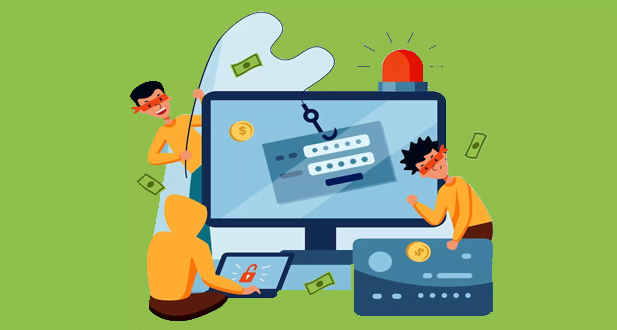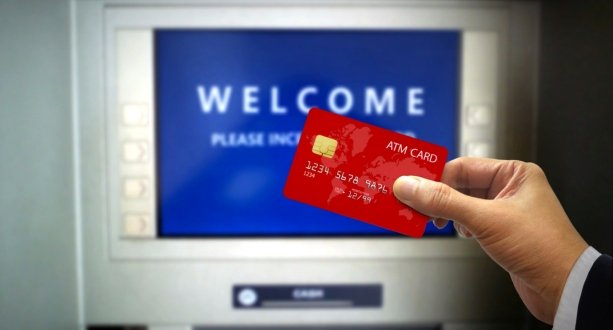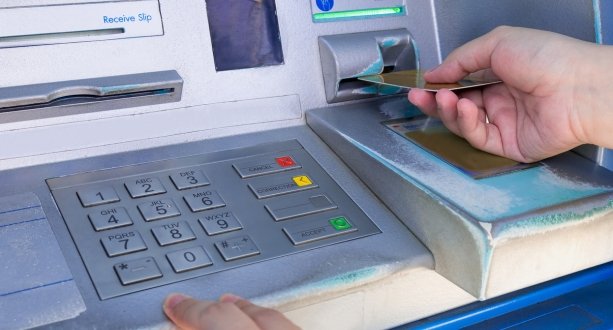ATM skimming is a type of fraud that involves attaching a device to an ATM (automated teller machine) in order to capture the information on the magnetic strip of a debit or credit card as it is inserted into the machine. The device, called a “skimmer,” is typically attached to the card reader on the front of the ATM and is designed to blend in with the rest of the machine. When a card is inserted into the ATM, the skimmer captures the card’s information and stores it for the fraudster to retrieve later. The fraudster can then use this information to create a duplicate card or sell the information to other criminals.
ATM skimming is becoming increasingly common, and it can be difficult to detect. Some skimming devices are very small and are placed inside the card reader, making them difficult to spot. Other skimming devices may be attached to the outside of the ATM, and may be more noticeable. Some skimming devices are even combined with cameras or other devices to capture personal identification numbers (PINs) or other sensitive information.
To protect yourself from ATM skimming, it is important to be aware of your surroundings when using an ATM. Look for any suspicious devices or attachments on the ATM, and consider using an ATM that is located in a well-lit, high-traffic area. You should also cover the keypad with your hand when entering your PIN, and regularly check your account statements for any unauthorized charges. If you suspect that an ATM has been compromised or if you notice any unusual activity on your account, you should report it to your bank or financial institution immediately.
There are several ways that skimmers can be used to steal card and PIN information. One common method is to attach a skimmer over the card reader slot on the ATM. This device is designed to fit over the top of the card reader and record the information from the magnetic strip on the back of the card as it is inserted. The skimmer may also include a small camera or other device to record the PIN as it is entered on the keypad.
Another method of skimming involves attaching a device to the cash dispenser or other parts of the ATM. These devices may be hidden inside the ATM or may be attached to the exterior of the machine. They are designed to record card and PIN information as it is entered, and may also include a camera or other device to record the user’s actions.
Skimming is a serious problem that can cause significant financial losses for both individuals and financial institutions. It is important for ATM users to be aware of the potential for skimming and to take steps to protect their card and PIN information. This may include covering the keypad with a hand or other object while entering the PIN, examining the ATM for any unusual or suspicious devices before using it, and reporting any suspicious activity to the financial institution or the police.
How to prevent atm skimming fraud:
- Be aware of your surroundings: Look for any suspicious devices or cameras that may be attached to the ATM or nearby. If you see anything unusual, do not use the ATM and report it to the financial institution or the police.
- Cover the keypad: Use your hand or another object to cover the keypad while entering your PIN. This can help to prevent cameras or other devices from recording your PIN.
- Use your hand to shield the card reader: When inserting your card into the ATM, use your hand to shield the card reader. This can help to prevent skimmers from recording the information on the magnetic strip of your card.
- Check the ATM for signs of tampering: Look for any loose or unusual fittings, or any parts of the ATM that appear to have been recently added or modified. If you notice anything unusual, do not use the ATM and report it to the financial institution or the police.
- Monitor your account: Regularly check your account statements and transactions to ensure that there are no unauthorized charges. If you notice any suspicious activity, report it to your financial institution immediately.
- Use secure ATMs: Use ATMs that are located inside banks or other secure locations whenever possible. These ATMs are typically less likely to be targeted by criminals.
Reporting Atm Skimming Fraud:
- Contact the financial institution: If you are a customer of the financial institution that owns the ATM, contact them immediately to report the issue. They will be able to investigate and take appropriate action to protect other customers from potential fraud.
- Report the issue to the police: If you are not a customer of the financial institution that owns the ATM, or if you are not sure who to contact, you can report the issue to the local police. They will be able to investigate the matter and take appropriate action.
- Report the issue to the bank regulator: If the ATM is owned by a bank, you can also report the issue to the bank regulator in your country. For example, in the United States, you can report the issue to the Consumer Financial Protection Bureau (CFPB).
By reporting ATM skimming incidents, you can help to protect yourself and others from potential fraud and financial losses. It is important to act quickly and provide as much information as possible when reporting the issue. This can help authorities to investigate the matter and take appropriate action.
Where does Atm Skimming Occur:
- ATM skimming can occur at any ATM that is not adequately secured against fraud. Skimming devices can be attached to ATMs in a variety of locations, including the card reader slot, the keypad, and the cash dispenser. Skimmers may also be hidden inside the ATM or attached to the exterior of the machine.
- Skimming is a common problem at ATMs that are located in areas with high foot traffic, such as tourist attractions, airports, and shopping centers. Criminals may target these locations because they believe that they will be able to capture a large volume of card and PIN information in a short period of time.
- It is important to note that ATM skimming can occur at any ATM, regardless of its location. It is therefore important for ATM users to be vigilant and to take steps to protect themselves from this type of fraud at all times.
Steps to find Atm Skimming fraud:
- Look for any unusual or suspicious devices attached to the ATM: Skimming devices may be attached to the card reader slot, the keypad, or other parts of the ATM. These devices may be visible or they may be hidden.
- Check for signs of tampering: Look for any loose or unusual fittings, or any parts of the ATM that appear to have been recently added or modified.
- Look for cameras or other recording devices: Skimming devices may include small cameras or other devices that are designed to record your actions or capture your card and PIN information.
- Compare the ATM to other ATMs: If you are familiar with the appearance of the ATM, compare it to other ATMs that you have used to see if there are any differences or abnormalities.
- Trust your instincts: If something about the ATM or its surroundings seems off or suspicious, do not use the ATM and consider reporting the issue to the financial institution or the police
- By following these steps, you can help to identify potential skimming devices and protect yourself from ATM skimming fraud. If you suspect that an ATM has been compromised, do not use it and report the issue to the financial institution or the police.
Types of Atm Skimming devices:
- Card skimmers: These devices are attached to the card reader slot on the ATM and are designed to record the information from the magnetic strip on the back of the card as it is inserted. Card skimmers may be hidden inside the ATM or attached to the exterior of the machine.
- Keypad skimmers: These devices are attached to the keypad on the ATM and are designed to record the PIN as it is entered. Keypad skimmers may be hidden inside the ATM or attached to the exterior of the machine.
- Camera skimmers: These devices are attached to the ATM or placed nearby and are designed to record the actions of the user, including the insertion of the card and the entry of the PIN.
- Deep insert skimmers: These devices are inserted into the card reader slot on the ATM and are designed to capture card and PIN information as the card is inserted. Deep insert skimmers may be more difficult to detect because they are hidden inside the ATM.
- Wireless skimmers: These devices transmit card and PIN information wirelessly to the criminal, who can then retrieve the data remotely. Wireless skimmers may be hidden inside the ATM or attached to the exterior of the machine.
- By understanding the different types of skimming devices that may be used, you can be better prepared to protect yourself from ATM skimming fraud.
Prevention of Atm Skimming fraud:
- Use security features: ATMs can be equipped with security features such as encryption and anti-skimming technology to protect against skimming attacks.
- Regularly inspect and maintain ATMs: Financial institutions should regularly inspect and maintain their ATMs to ensure that they are in good working order and to detect any potential skimming devices.
- Educate customers: Financial institutions can educate their customers about the risks of ATM skimming and how to protect themselves, such as by covering the keypad while entering the PIN and examining the ATM for any unusual or suspicious devices before using it.
- Use secure locations: Financial institutions should consider the location of their ATMs and choose secure locations that are less likely to be targeted by criminals.
- Implement two-factor authentication: Financial institutions can implement two-factor authentication, which requires the use of a second factor (such as a one-time code sent to a phone) in addition to the card and PIN, to make it more difficult for criminals to access accounts.
By implementing these measures, financial institutions and ATM manufacturers can help to reduce the risk of ATM skimming and protect their customers from potential fraud and financial losses.
Impacts caused by Atm skimming fraud:
- Financial losses: Skimming attacks can result in significant financial losses for both individuals and financial institutions. Criminals may use the stolen card and PIN information to make unauthorized purchases or withdraw cash from accounts, leading to financial losses for the account holders.
- Damage to reputation: ATM skimming incidents can damage the reputation of financial institutions, leading to a loss of trust and customer loyalty.
- Legal consequences: Financial institutions may face legal consequences for failing to adequately protect their customers from skimming attacks.
- Identity theft: Skimming attacks can also lead to identity theft, as criminals may use the stolen card and PIN information to obtain other personal information about the account holder, such as addresses and social security numbers. This can have serious long-term consequences for the victim.
- Stress and anxiety: Victims of ATM skimming fraud may experience stress and anxiety as a result of the financial and personal consequences of the attack.
- It is important for both individuals and financial institutions to take steps to protect against ATM skimming fraud and to report any suspicious activity to the authorities. By taking these steps, you can help to reduce the risk of falling victim to skimming attacks and the negative consequences that can result.




